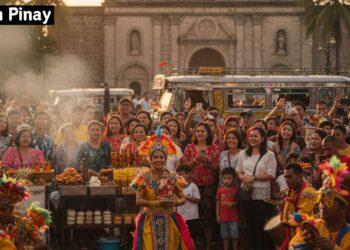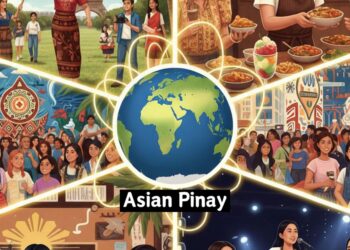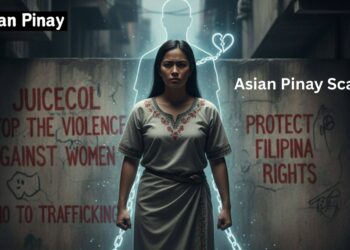“Asian Pinay” refers to a Filipino woman who is Asian. The term “Pinay” is a colloquial term for a female Filipino, formed from the word “Filipino”. As the Philippines is an archipelagic country in Southeast Asia, its people are considered part of the Asian continent.
- Etymology: “Pinay” is a slang word derived from “Filipino”.
- Geography: The Philippines is located in Southeast Asia.
- Usage: It is a colloquial and common way for Filipinos to refer to themselves.
- Formal vs. Colloquial: “Pinay” is a colloquial term, while the formal term for a woman from the Philippines is “Filipina”.
Asian Pinay? It is more than a term; it includes honoring girls, women, and ladies in their garbs, as well as patience and culture. Asian Pinays are making an impact in educational attainment, professional achievement, and even global migration, taking seismic steps to redefine the empowered woman. Here, we look at issues such as the portrayal of women in the media, changing notions of attractiveness, and the problems they deal with, including depression and gender discrimination.
What is Asian Pinay?
Persons associated with Filipino culture are commonly known as the Asian Pinay, and they usually emphasize their cultural construction in Asia. Pinay is a slang term used with pinay, described as a woman filling the position of vice president in ABC Corporation. It is depicted by strength and versatility in the many roles occupied by Filipino women. That can be why they assert their identity not only as Filipinos but also within the culture of Asians.
Asian Pinay accentuates the reality of Filipino women as one of Asia’s many cultures. Even though they fall under the broader classification of Asians, it is worth noting that their cultures are influenced by indigenous people’s cultural heritage, Spanish, and American culture. This identity is embraced because it is vivid, diverse, and quite enduring, and it contains the complicated past and current state of the Philippines. Asian Americans within the Pinay movement in the continental context are essential to the comprehensiveness of any Asain cultural structure. A lot of the time, the Asian self is understood as one being spoken by all people, ignoring the cultural intricacies of the people.
The Role of the Asian Pinay in Society
The Philippines is an archipelago of over 7,000 islands in Southeast Asia. Because of its geographical location, it has been greatly influenced by Malay, Chinese, Spanish, and American cultures. This blend of cultures defines the everyday lives of Filipina women, changing their values, traditions and worldview. The Perez family represents Filipino women, typically known as Pinays, who carry cultures of the east, west, and natives. Furthermore, they are hospitable, giving, family-centered, and instinctively flexible. Due to the effects of several hundreds of years of colonization and migration, a new cosmopolitan culture has developed that is anchored in old traditions yet offers a contemporary spin. Community and family are at the core of Filipinos. The Asian Pinay finds herself multidimensional as a daughter, mother, and career woman, with an emphasis on respect, loyalty, and community. Social customs such as utang na loob and pakikisama determine how Pinays conduct their relations inside the family and society at large.
Asian Pinay in Popular Culture
Even though many Pinays still adhere to traditions, they are also adopting new values, especially in education and employment.
Such cleavages are apparent in how she balances social conformity and personal aspirations, balancing antiquity and modernity according to their demands.
Because education is of utmost importance to Filipinos, Filipino women reap the fruits of such in their achievements.
The country has one of the highest literacy rates in Asia, and women are engaged in a range of professions, including Medicine, Education, Information Technology, and Business.
This has been coupled with success by Pinays such as Maria Ressa and Angel Alcala, who have made a name for themselves in the world.
When talking about OFWs, the first thing that comes to mind is unforgettably unique modern-day heroes and a significant percentage of armies being women. Pinays look after households and actively participate in host nations’ economies.
Their flexibility and versatility can be seen in many fields, such as healthcare and hospitality, and they appear as an Asian Pinay on a global stage.
The image of the Pinay in the media and filmmaking industry has taken a huge leap from quite a few years ago to now, with so many Pinay in the center stage in Asia and Western media.
Artists such as Lea Salonga and Liza Soberano, singers like Moira Dela Torre, and social media personalities have all contributed to changing the image of Filipino women and moving them away from negative stereotypes by focusing on their diversity.
The beauty ideal in the Philippine Culture has been known to be biased towards white skin due to the effect of colonization.
Challenges Faced by the Asian Pinay
Gender stereotypes are especially prevalent among Asian Pinays, whether at home or outside the Philippines. They tend to be classed as meek or housewives, especially in foreign lands.
These stereotypes do only the opposite of what most people want, which is progress. Conventional stereotypes are predominant in women supporting and raising children above ‘pursuing their own careers,’ leaving much less space for self-fulfillment.
Regardless of their efforts, Asian Pinays still have no proper representation in global platforms despite making their fair share of input. Their visions and experiences, irrespective of what language they are expressed in, be it in media, politics, or family businesses, are obtrusive.
Without import, the regressive patterns are deepened where every positive image of Pinays is overshadowed by the daytime soap or bulabog images hyping the need of representation of Pinay images and accomplishments.
The contradiction for every Pinay of being modern while still behaving in accordance with traditional expectations creates a lot of pressure that is remorseless on their wellbeing.
They, like many others, suffer from the so-called diseases of civilization: depression, anxiety, and stress, but are criticized for consulting specialists.
Making sure that there is socio-emotional care that is directed towards the specific conditions of Asian Pinays is crucial in building up an emotionally healthy society.
Empowering the Future Generation of Asian Pinays
Many efforts in the Philippines seek to uphold women’s rights and empowerment e.g. Gabriela, and the women’s commission of the Philippines.
These groups are especially active in promoting equal opportunities for both genders, advancing women’s rights, and educating, motivating and providing resources for Pinay empowerment.
Social media has become one of the great resources for Pinays who want to tell their story or speak about their rights and find support from other people all over the world.
Social networks such as Facebook, Instagram, and Tiktok have made it easier for the women of the Philippines to let their voices be heard and be able to create communities that help them in their fight for themselves.
Conclusion
The Asian Pinay identity is a source of strength, resilience and power of the women of the Philippines. While it has not been easy to fit in with the modern society, it is encouraging to note that they are able to retain some of their basic fundamental beliefs while at the same time seeking for change and new ideas.
To honor Asian Pinays is to treat them as valuable members of society, both in their home country of the Philippines and the wider world.
FAQs
What is the difference between Pinay and Filipina?
Pinay is a colloquial term for a Filipino woman, while “Filipina” is a formal term.
Why do Filipinas call themselves Pinay?
Pinay is a term of endearment and identity used to express pride in being a Filipino woman.
What are the characteristics of a Pinay woman?
Pinay women are known for their strength, resilience, hospitality, and deep family values.
What makes Asian Pinays different from other Asians?
Asian Pinays have a unique cultural heritage influenced by indigenous, Asian, and Western cultures. This blend makes their experiences and identity distinct within the broader Asian context.
What are the beauty standards for Asian Pinays?
Beauty standards for Pinays traditionally favoured lighter skin, but there is a growing movement celebrating “morena” (brown) skin and natural beauty.
What is the ideal marriage partner for a Filipina?
Many Filipinas value partners who respect family values, are supportive and show genuine care and understanding of their cultural background.
Why are Filipinas known for their hospitality?
Filipino culture emphasizes pakikisama (getting along with others) and pagmamalasakit (concern for others), making hospitality an essential characteristic of Filipino identity.
What challenges do Pinays face when working abroad?
Pinays working abroad often face discrimination, exploitation, and separation from their families. Despite these challenges, they continue to contribute significantly to their families and the global economy.
How do Filipino women balance modernity and tradition?
Filipino women navigate this balance by embracing education and professional growth while maintaining strong ties to family and cultural values.
What are the common misconceptions about Pinay women?
Common misconceptions include stereotypes of being submissive or solely domestic. In reality, Pinay women are diverse, strong, and capable leaders in various fields.





